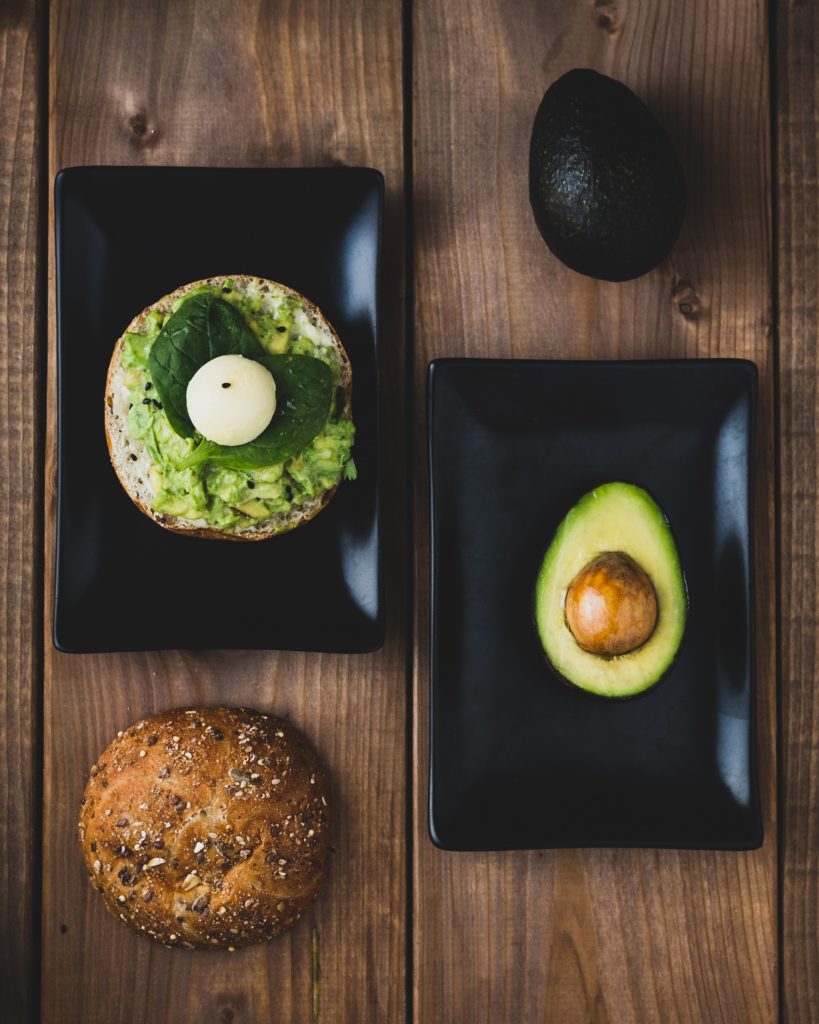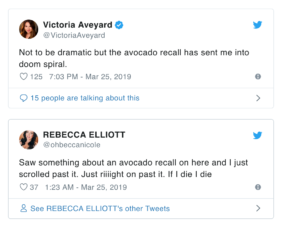All fields are required
Posted in Food Safety,Listeria,Our Blog,Outbreaks & Recalls on March 26, 2019

The FDA is recalling California avocados that were distributed to six different states over fears that the fruit were contaminated with listeria. Both organic and non-organic varieties were packed by the company Henry Avocado and shipped to locations in Arizona, California, Florida, New Hampshire, North Carolina and Wisconsin. Here’s what you need to know about the Avocado Recall:
As far as we know, nobody has gotten sick from the tainted avocados yet. But a routine inspection of Henry Avocado’s packing facility came up positive for listeria bacteria, so the Escondido, California company is recalling all of the product out of an abundance of caution. The organic avocados bear green-yellow stickers that read “California” at the top and “organic” at the bottom; the non-organic ones are labeled “Bravocado” and “California” and have stickers that appear much more yellow.
The total number of avocados subject to the recall isn’t yet clear. According to reporting by the New York Times, an article on Henry Avocado’s website estimated that the packing facility could ripen some two million avocados each year.
And now for a public service announcement: please, for the love of good things, wash your avocados, lest they make you sick. How might that work? If the part of the avocado that’s eaten is protected within a skin, why would you have to wash it? Isn’t the skin supposed to keep out the stuff that might make you sick?
Well, that’s the problem. Avocado skins do, for the most part, keep out the pathogens. But those pathogens have a tendency to stick around on the outside of the skin. If you’re dealing with say, an orange, or a banana, or some other fruit with a peel-able rind, you can get rid of the skin of the fruit without transferring the pathogens to the inside.
With an avocado, however, the flesh is soft, and the rind doesn’t peel so easily. The standard way to get at the flesh of an avocado is to cut through the skin with a knife. Do this without washing the avocado first, and you’re running a risk: you can transfer bacteria through the skin to the inside by means of the cut. The knife opens up the protective rind of the fruit, and pushes through, potentially transferring the bacteria to the inside.
This is why the CDC recommends that you wash avocados, along with melons, citrus, root vegetables, and pretty much everything else. They recommend that you give the outside of the fruit a thorough scrub with a clean produce brush and running water. Afterwards, you should use a clean cloth or paper towel to dry the avocado. Letting water stand on the skin creates a moist, bacteria-friendly environment and may undo whatever gains you made towards cleanliness by washing in the first place.
The avocado recall has inspired several outlets to cite a recent report from the FDA looking into pathogens on the surface of avocados. Published in December of last year, the report drew on data from 1,615 avocados tested over the course of two years. The report found listeria on 17% of the avocado skins that they looked at. A much smaller proportion of the fruits demonstrated listeria in the pulp, and a small number also tested positive for salmonella.
17 percent is a pretty high proportion – that works out to nearly one in every five avocados that they tested. The listeria was found on imported and domestic avocados both. Organic and non-organic fruits bore evidence of the bacteria.
You can’t, in other words, shop around the problem of listeria in avocados: you have to deal with it proactively. That means giving your avos a bath before you get to eating them, using the procedure outlined above. Following that basic food safety procedure should protect you from listeria as well as any other pathogens that are present.
Infection with listeria could take a while to show. Although the pathogen might make itself known within 24 hours of hitting your system, it can also incubate for 1 to 4 weeks before symptoms start to appear. That means that people who have contracted listeria from the affected avos might not know yet, or might not have made the connection between their sickness and the avocado they ate.
Despite the recall, many are still choosing to risk eating avocados. According to a rather interesting read, many people are joking “if I die, I die.”


For a healthy adult, exposure to low levels of listeria bacteria typically isn’t the end of the world – you may experience symptoms typical of food poisoning, but usually not much more than that. For the very young, the elderly, or the immunocompromised, however, listeria can mean a trip to the hospital, causing serious illness or even death.
For pregnant women, listeria is even more dangerous. It can cause miscarriage or stillbirth. If you’re expecting, be extra cautious with your avocados and with food safety in general; listeria is not a pathogen to be trifled with. Be sure that you’re washing your fruits and vegetables and exercising food safety vigilance in general.
To further protect yourself from listeria, be careful not just with your avocados but also with chicken and meat products you suspect might be undercooked. Wash your avocados! Also: wash your hands. That’s the key to good food safety, and a must for avoiding pathogens. Now get out there and stay vigilant!
By: Sean McNulty, Contributing Writer (Non-Lawyer)